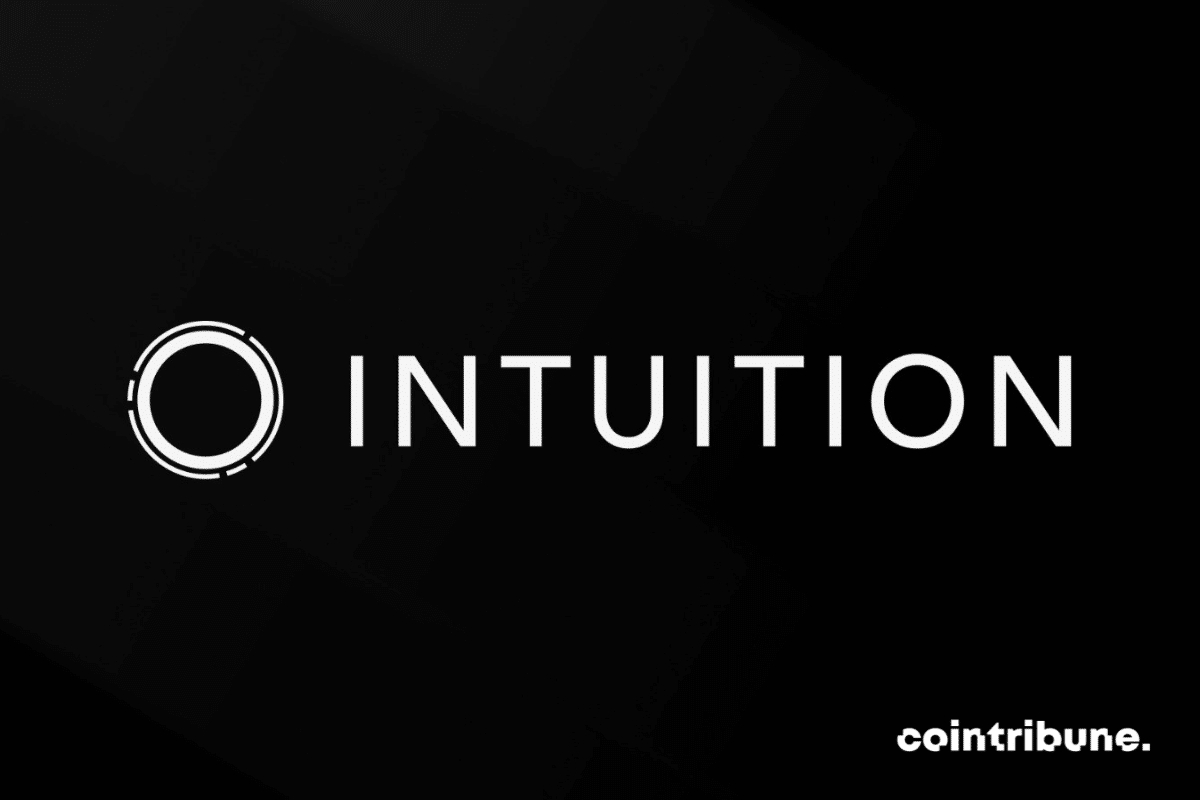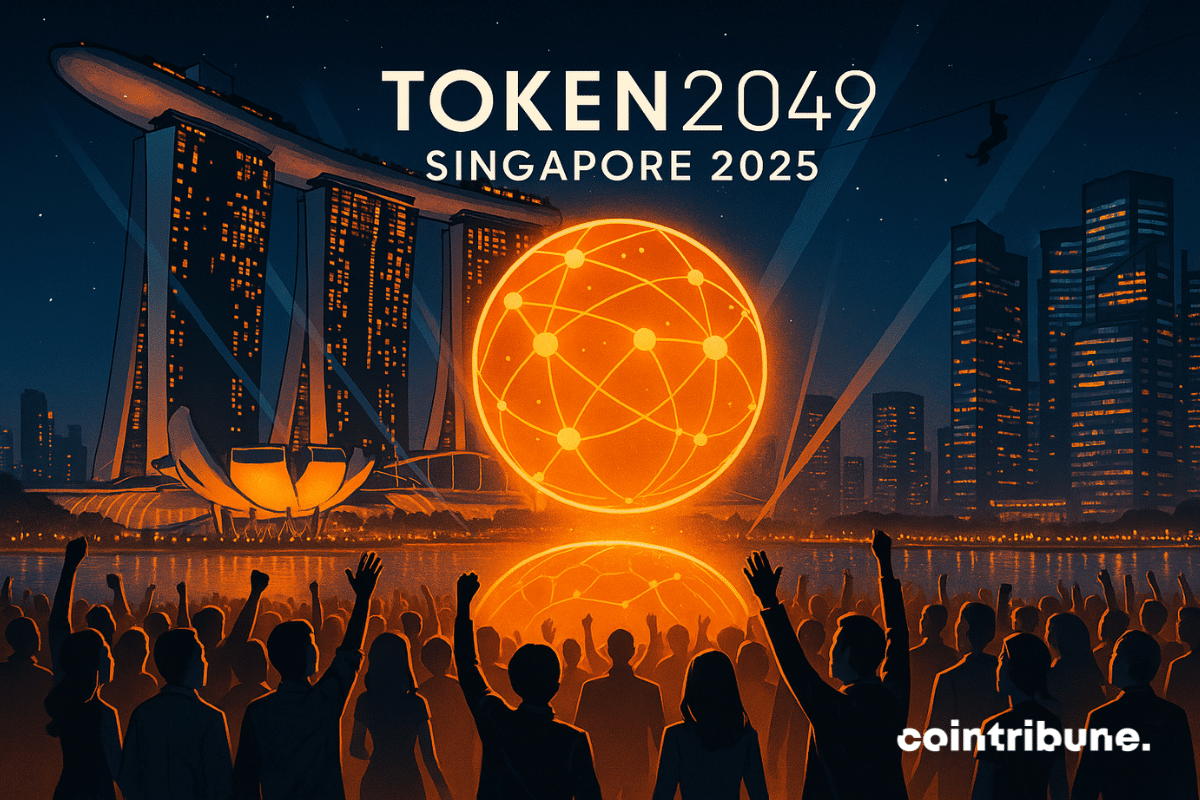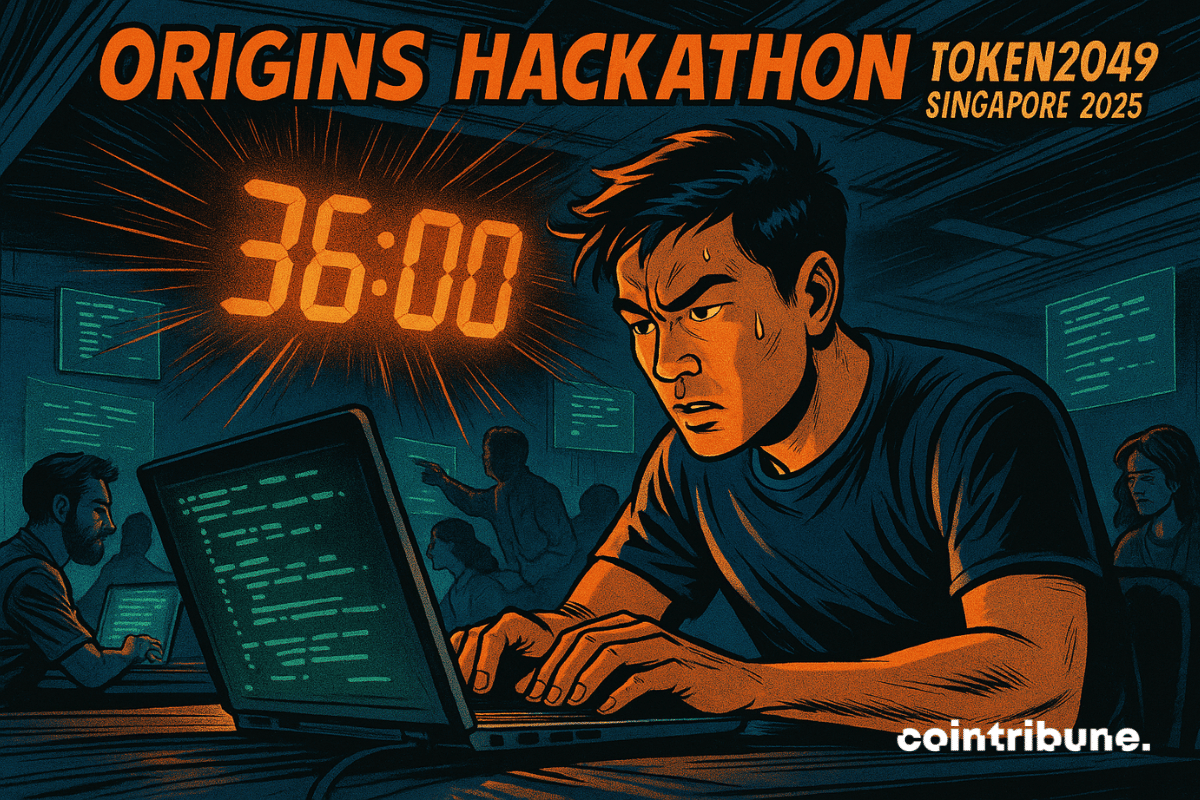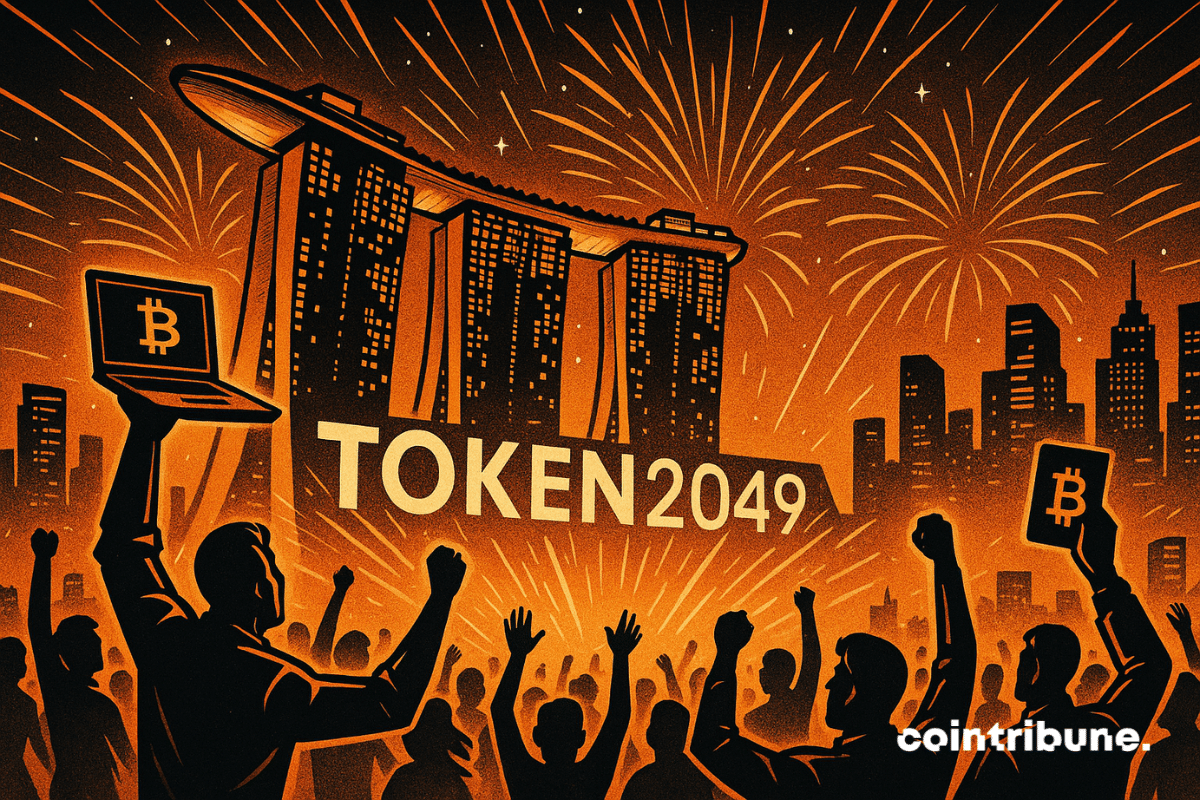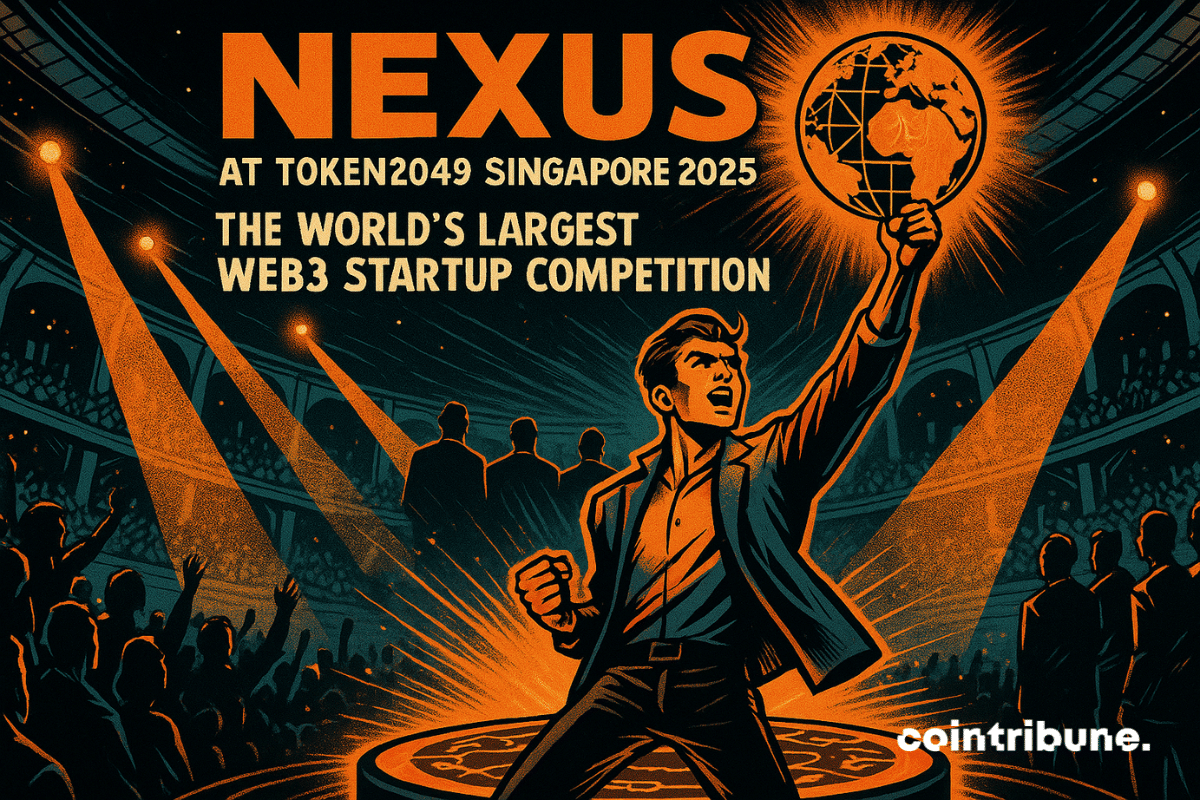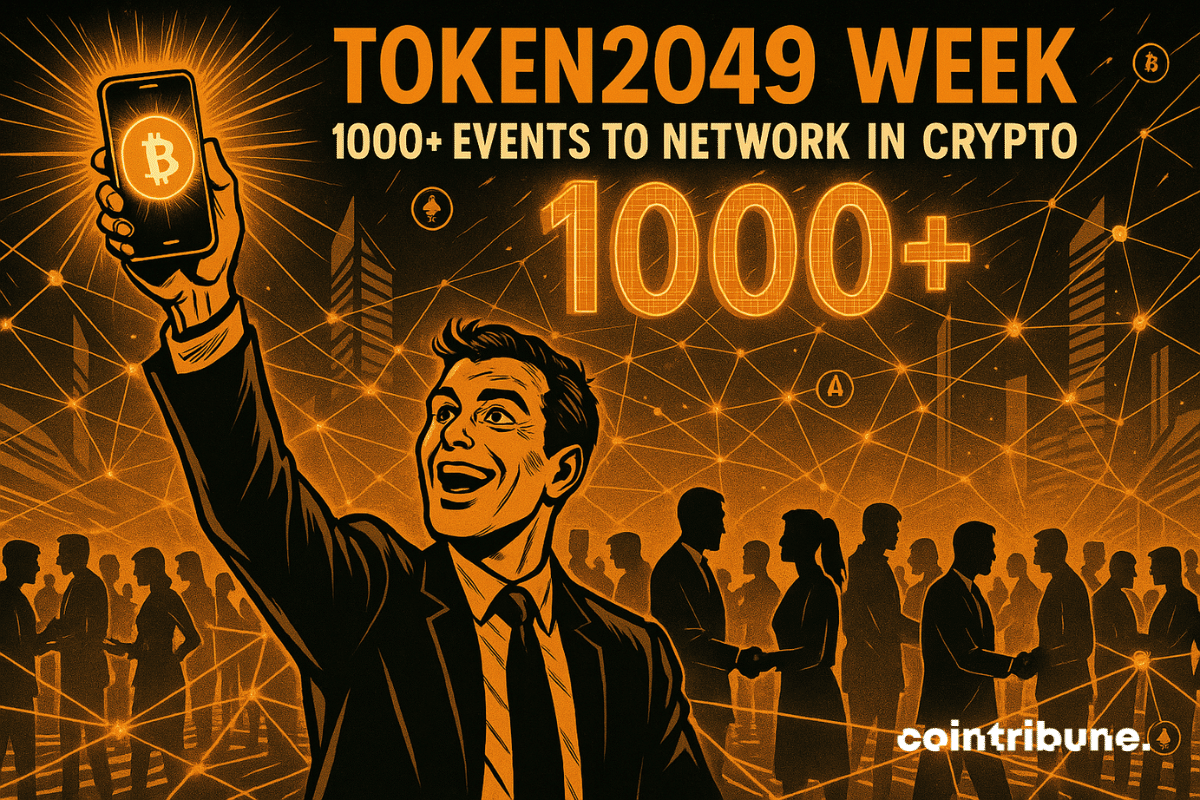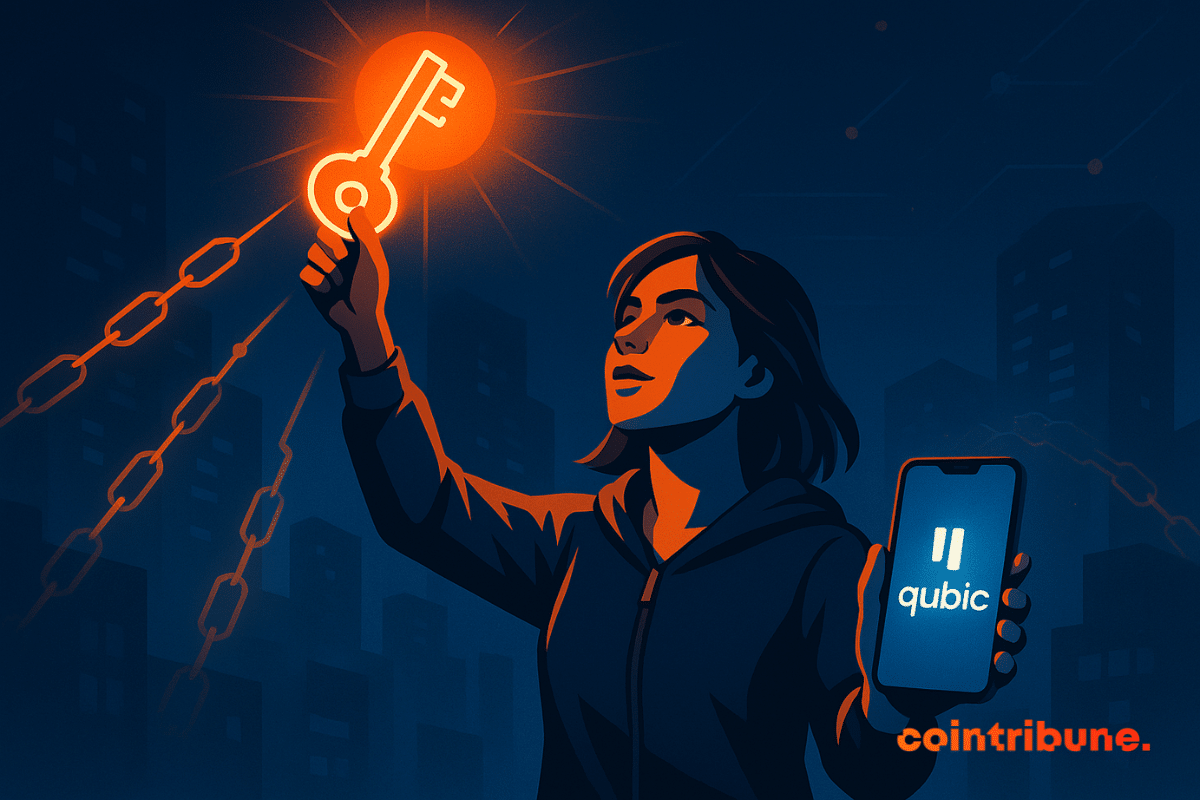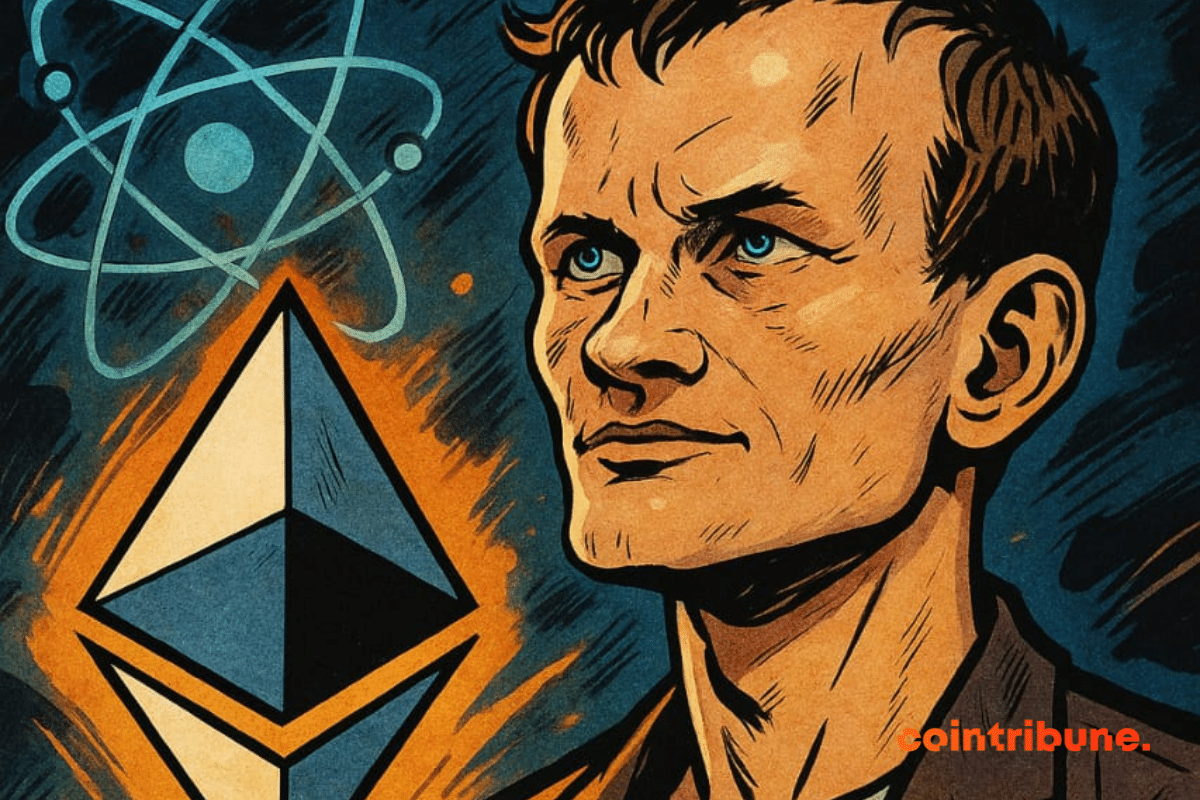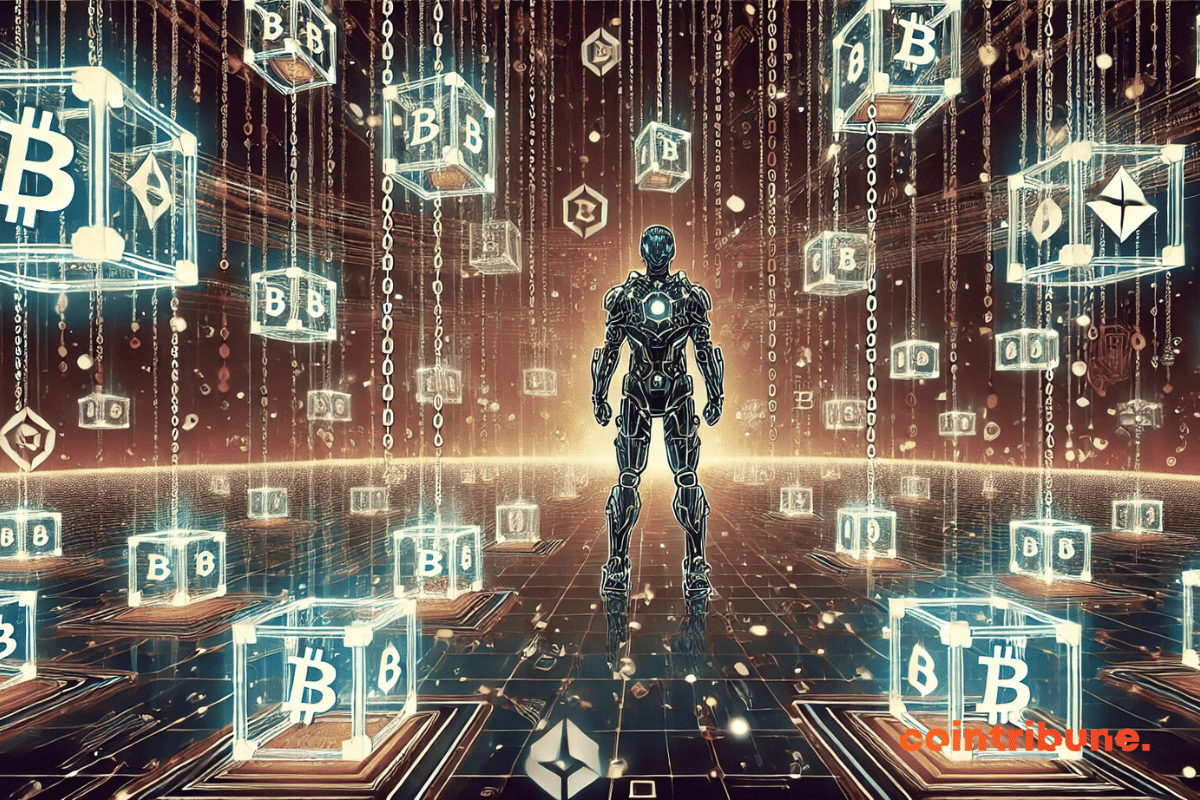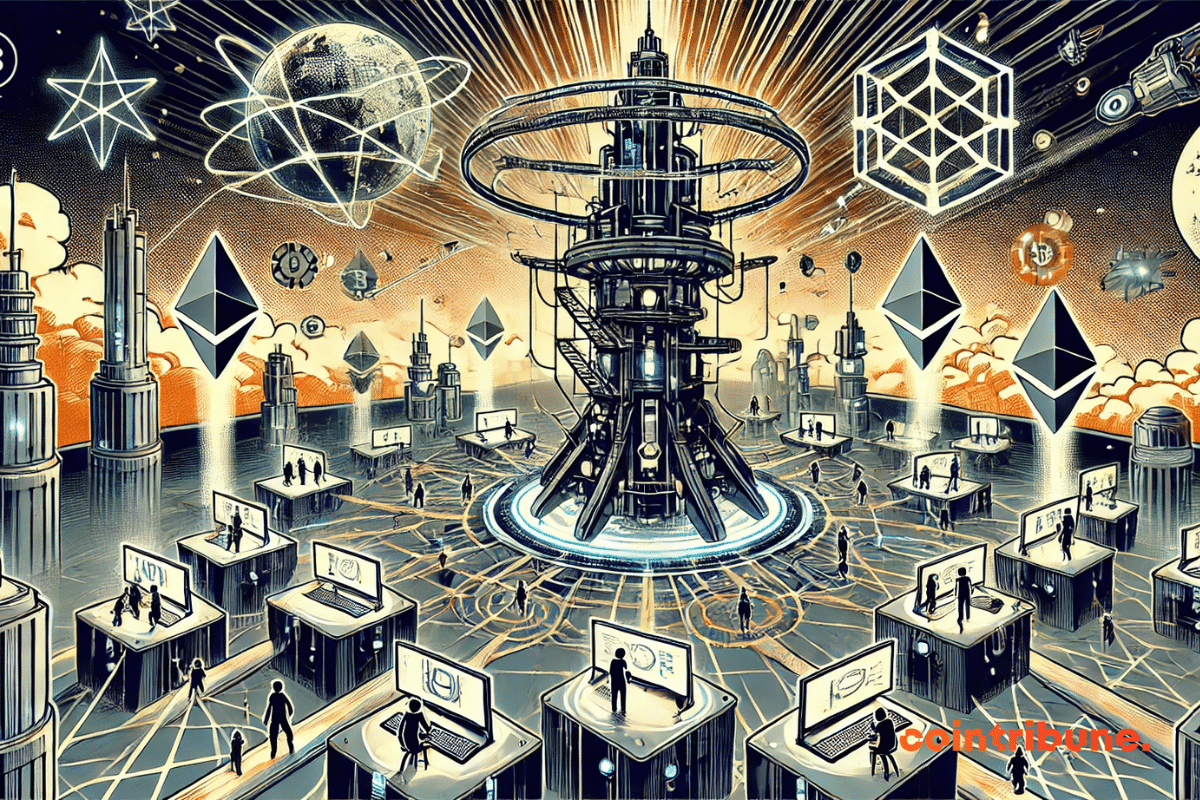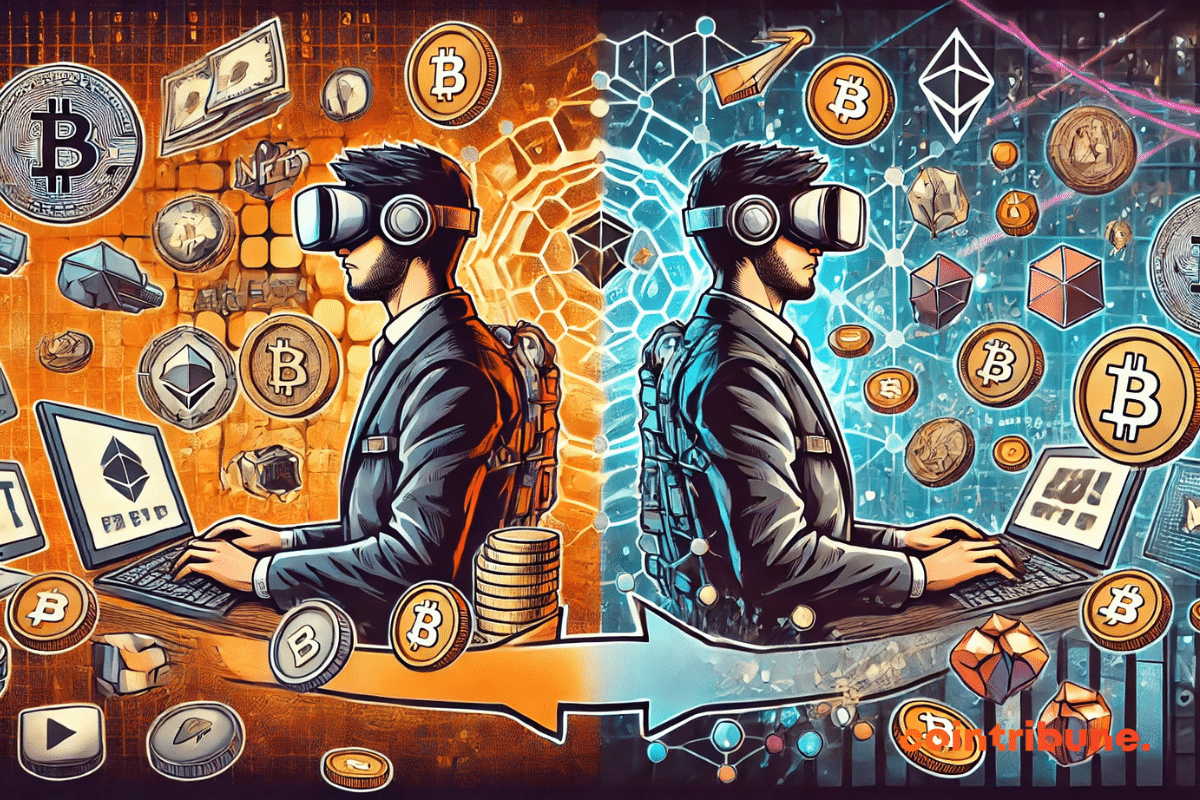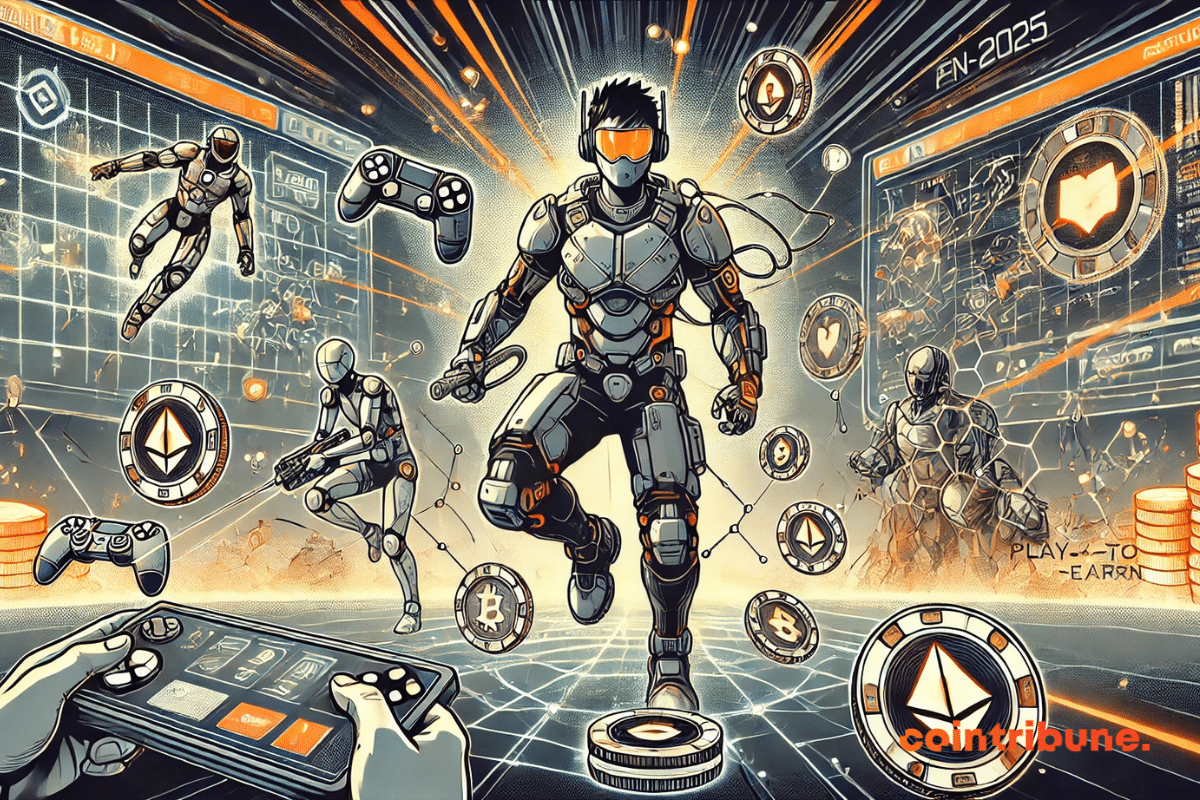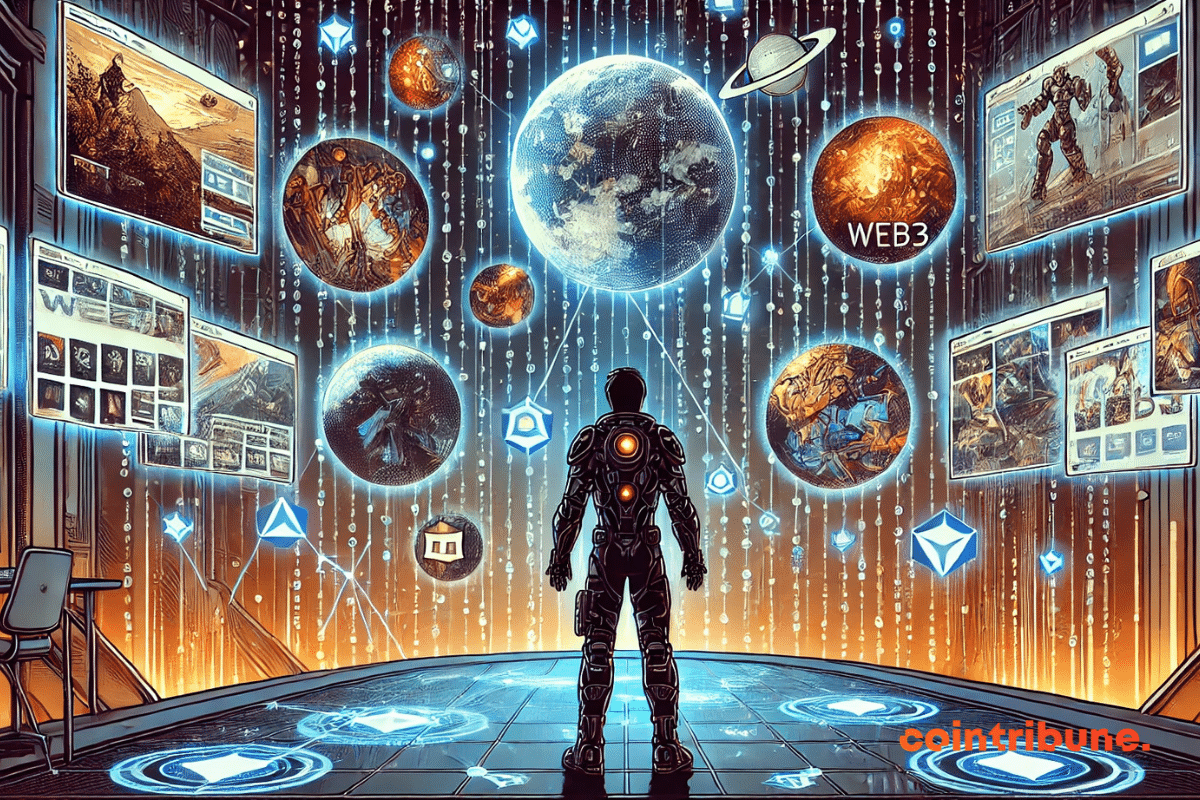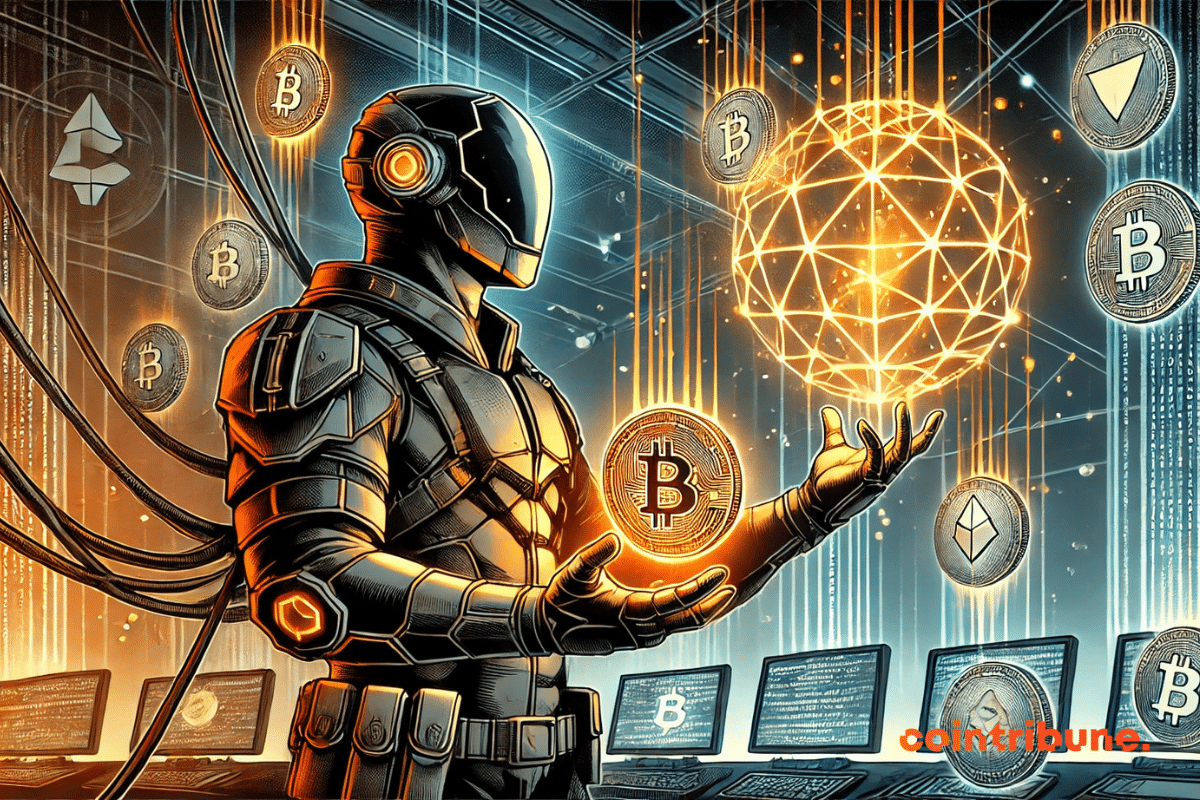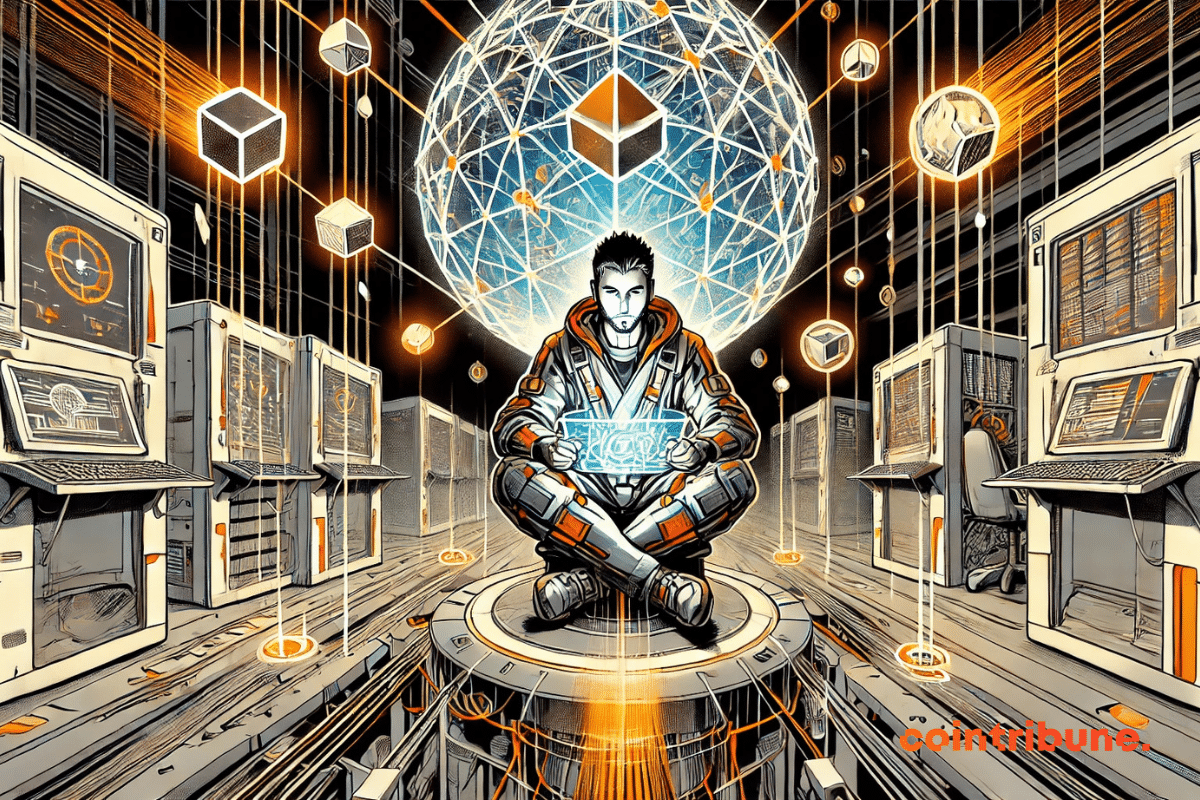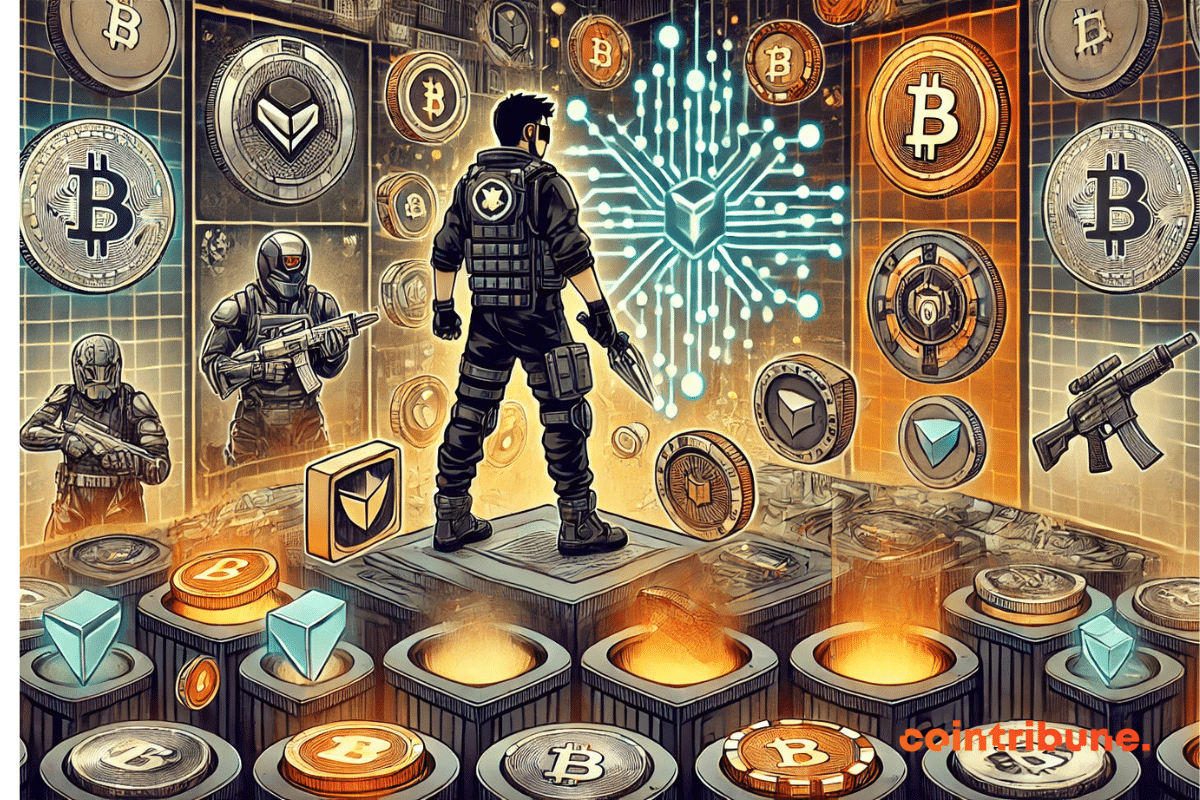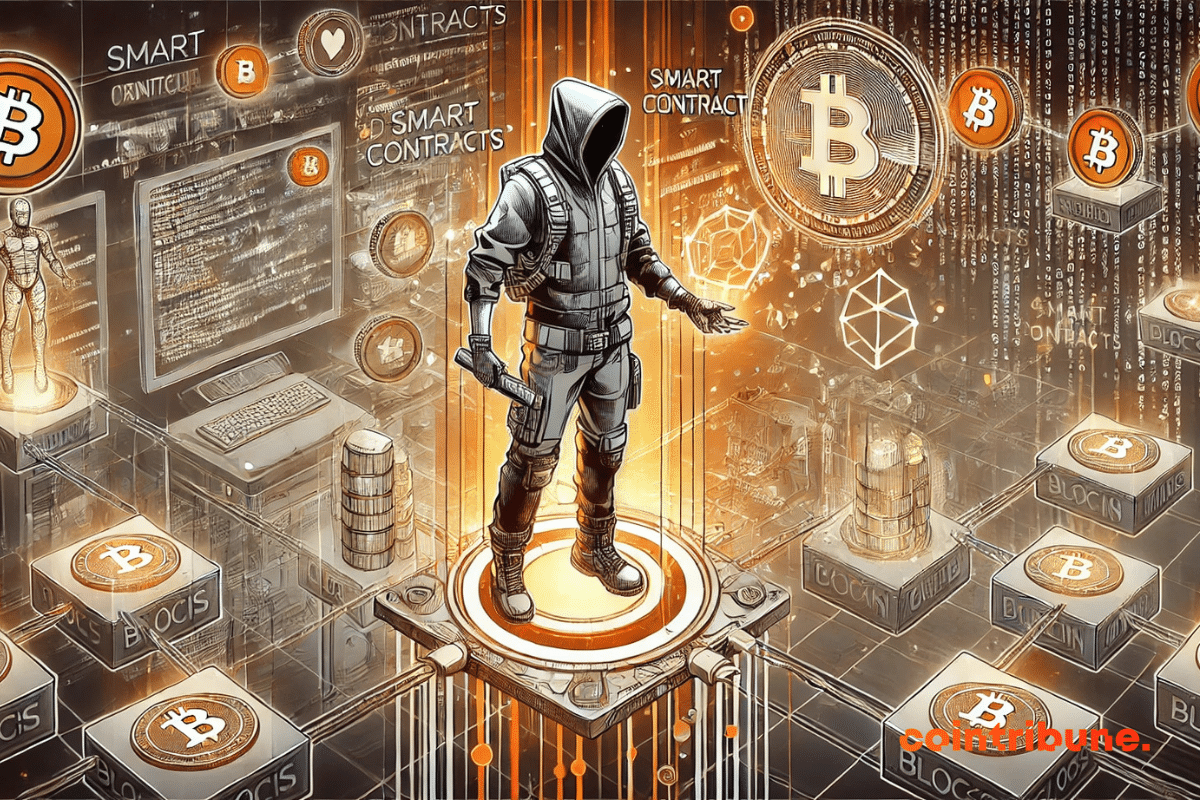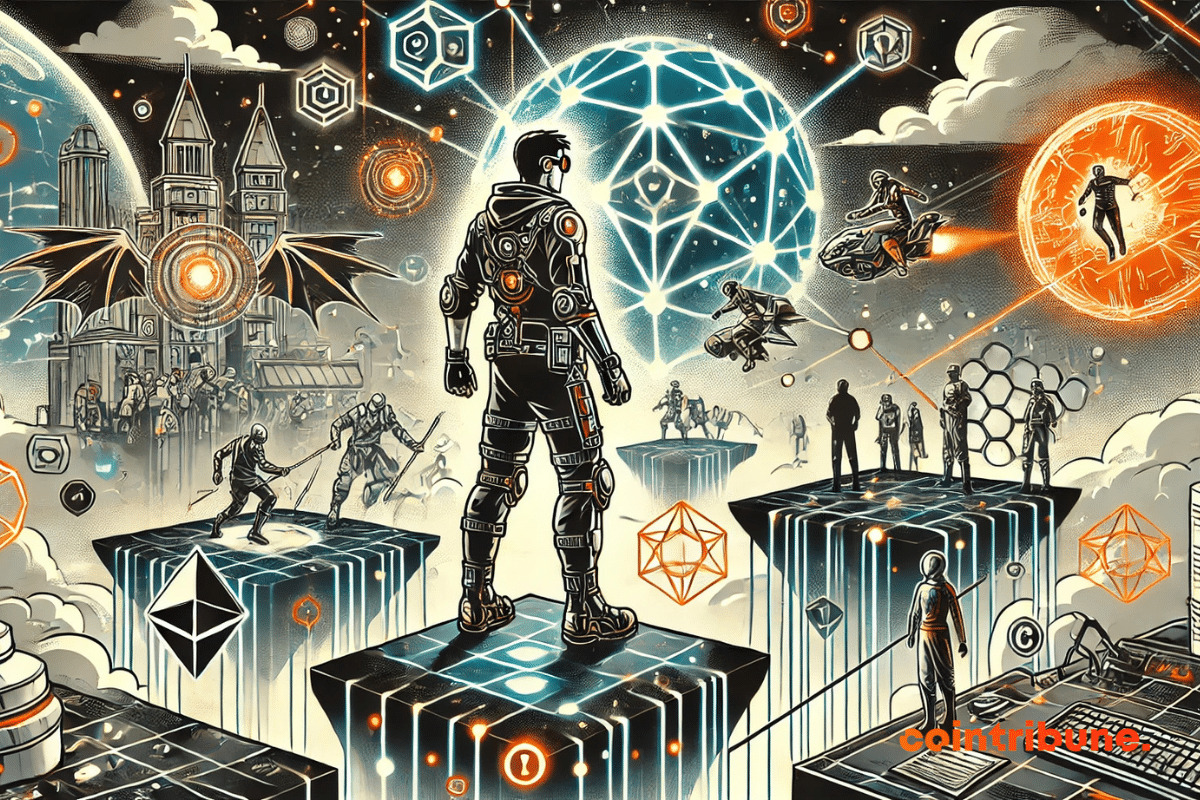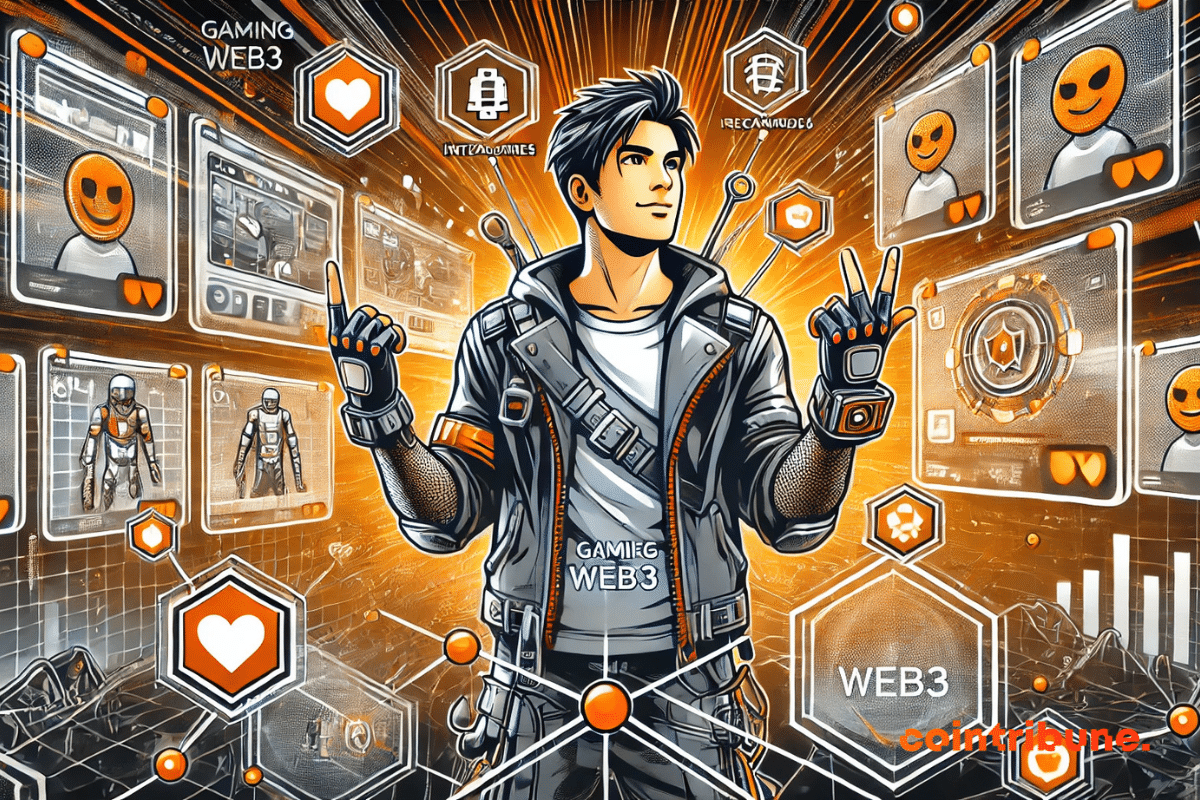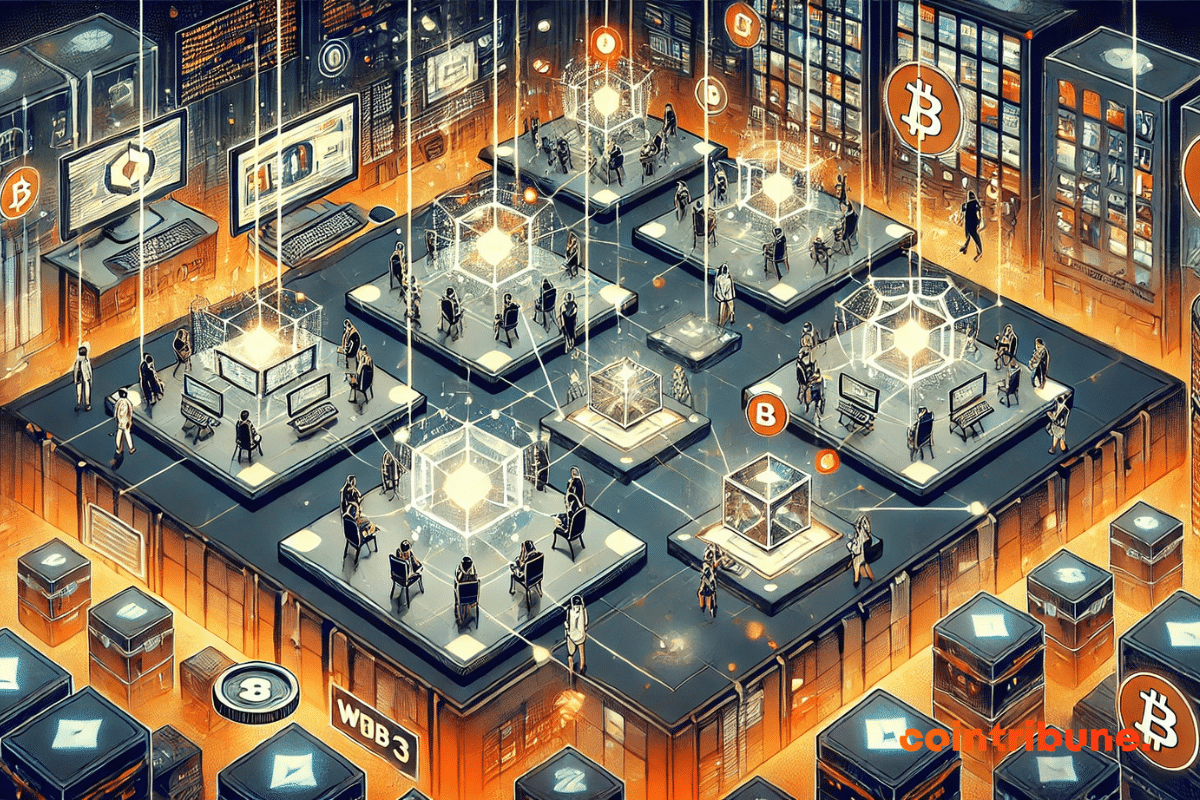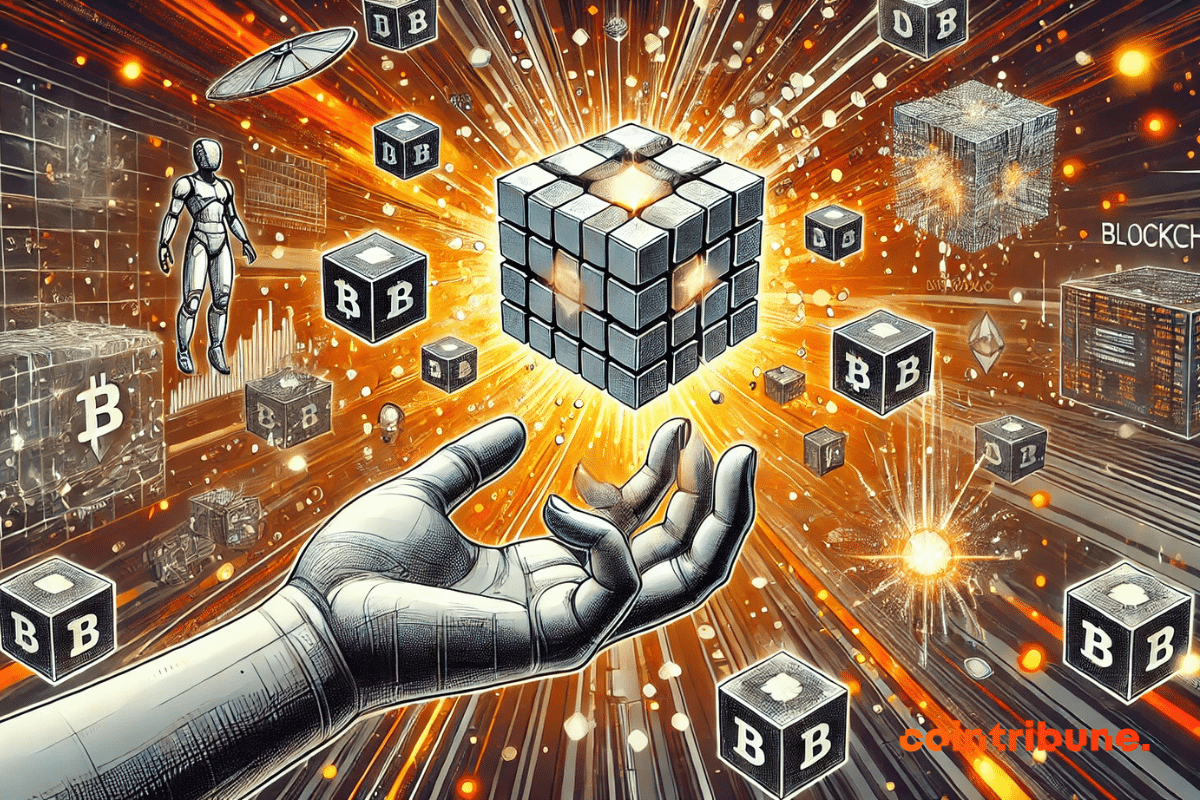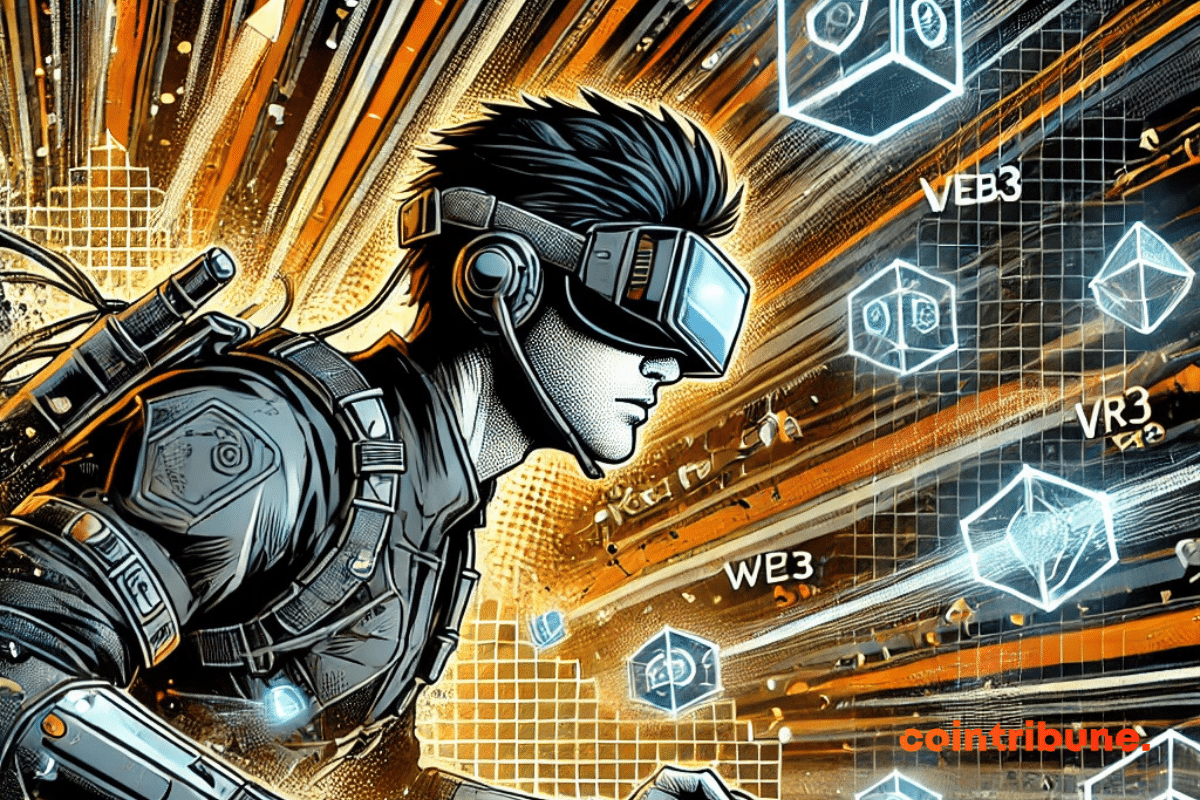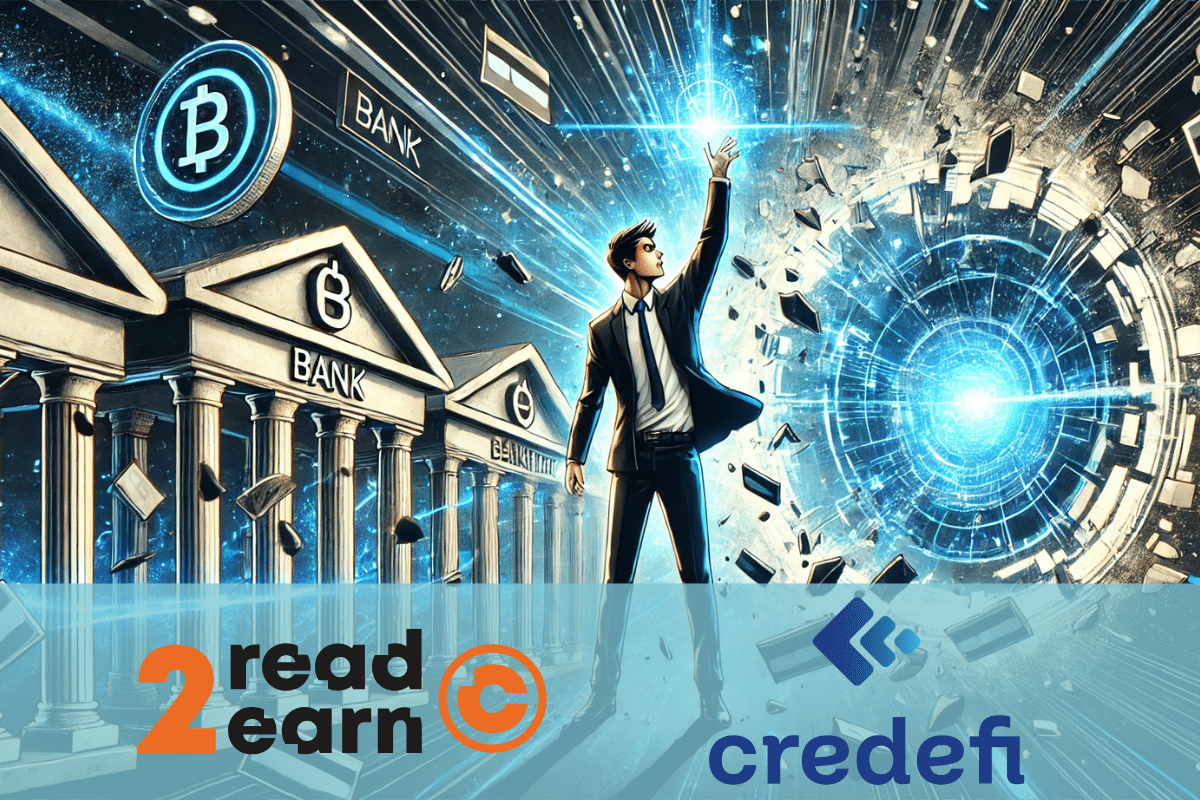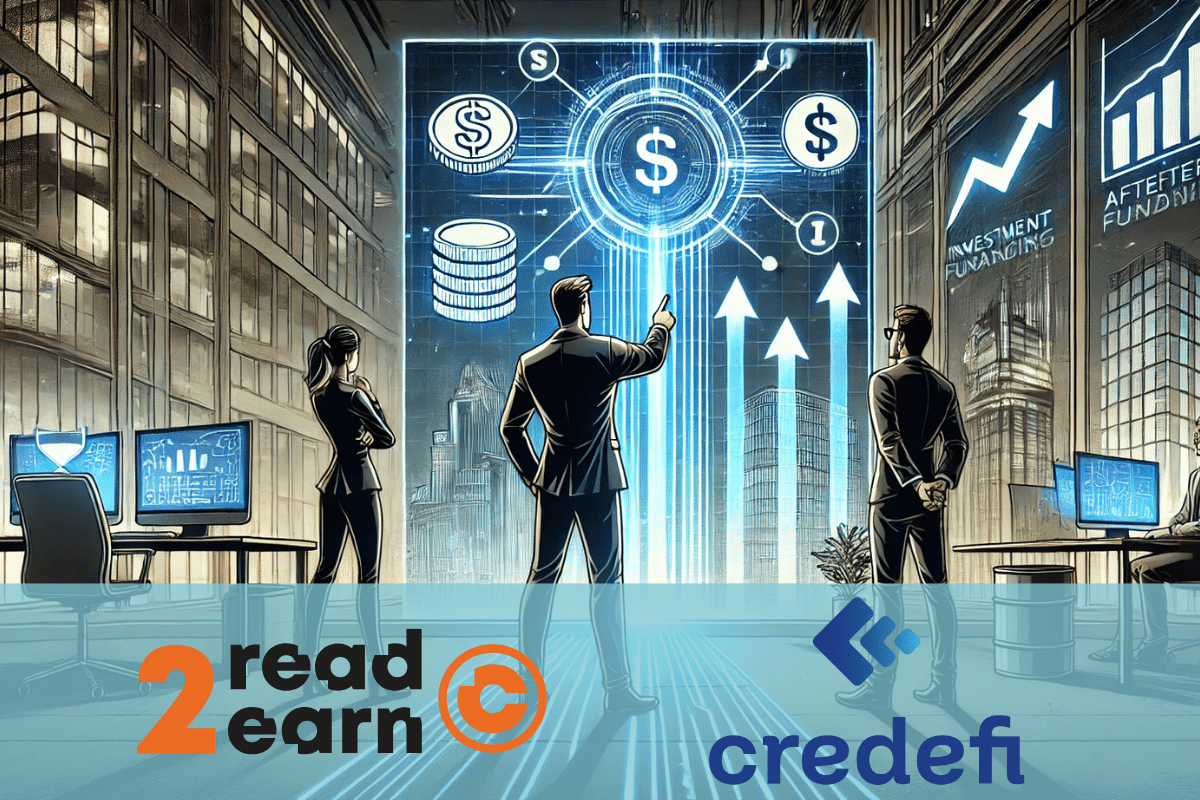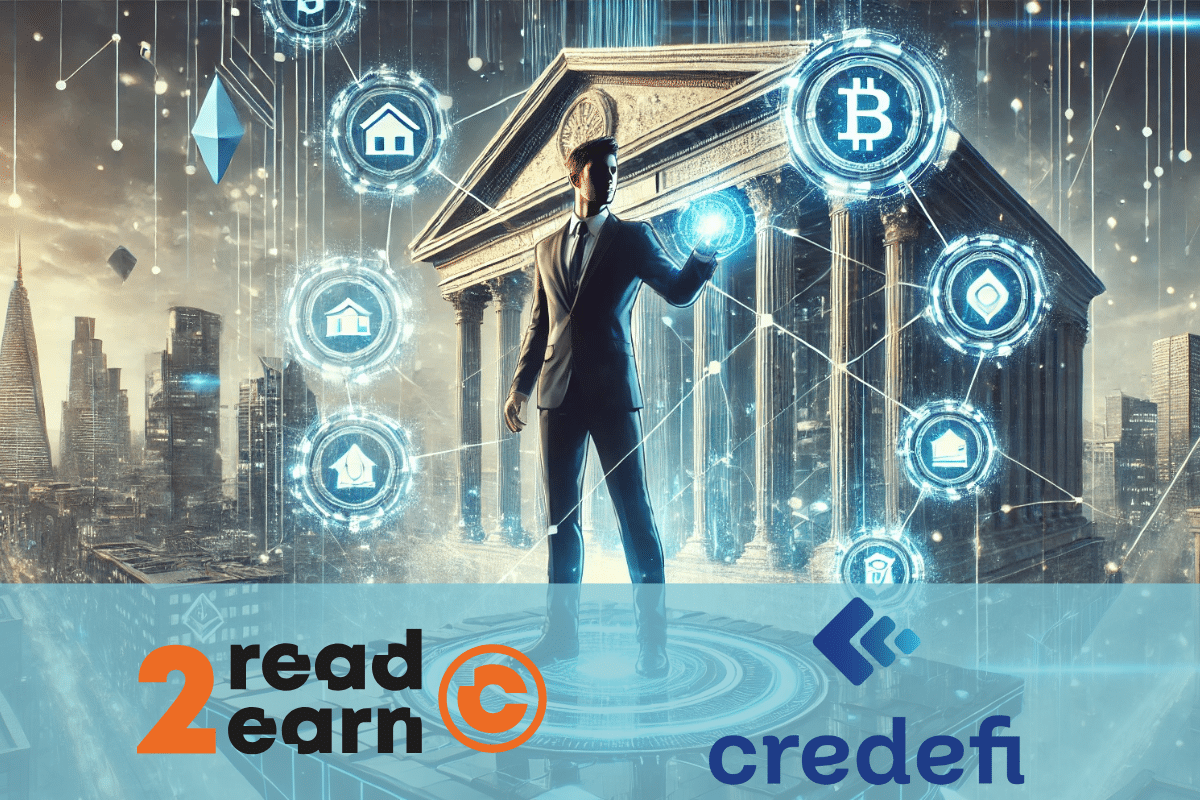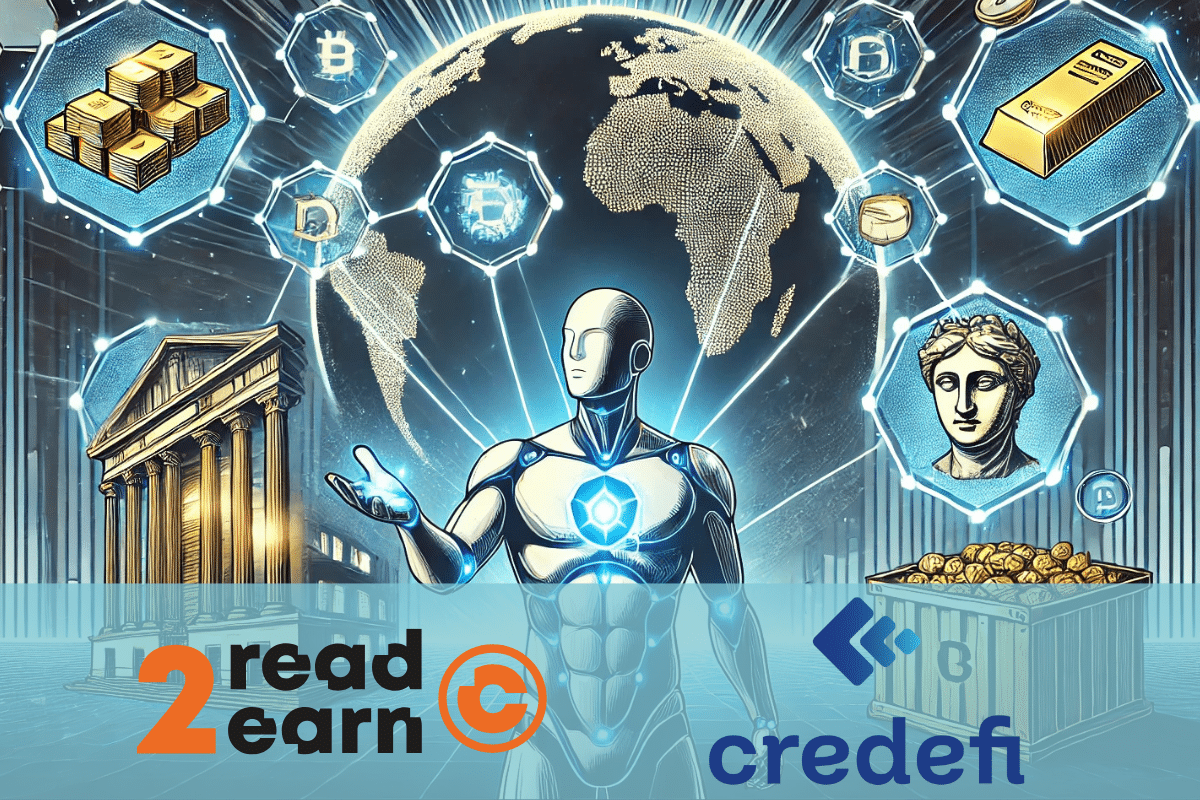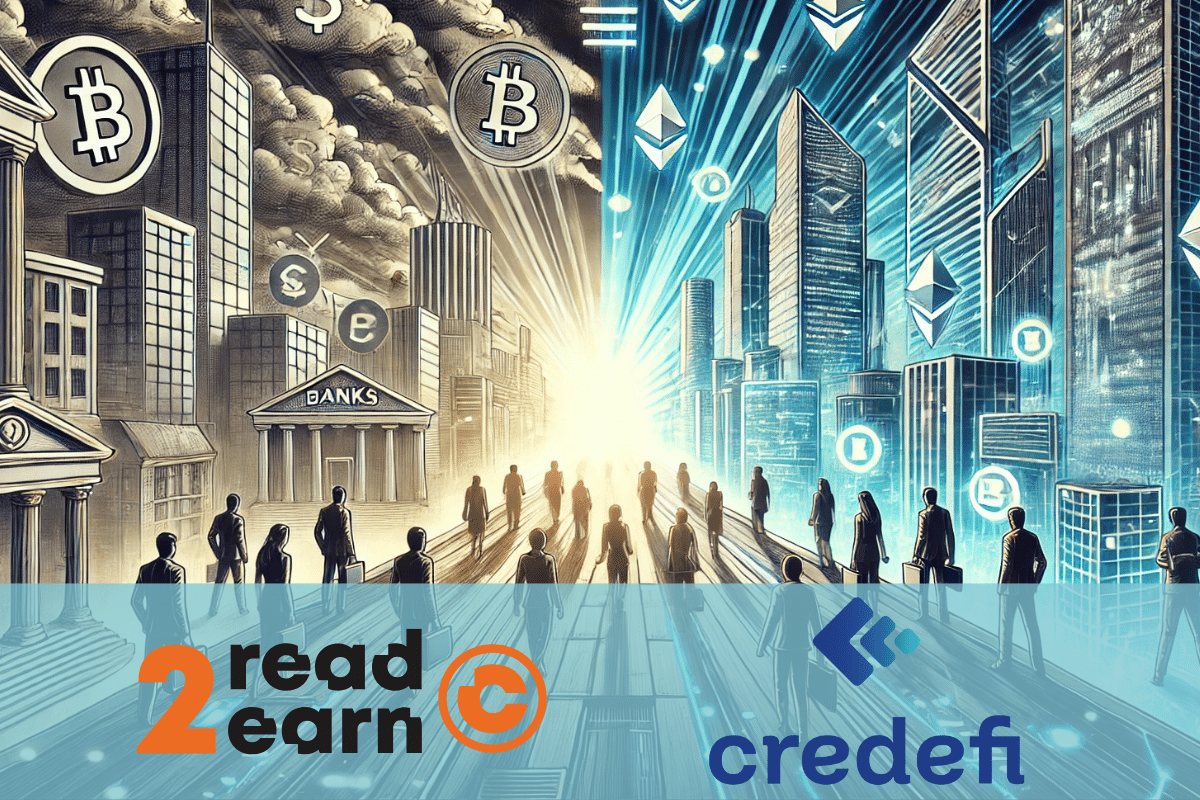In a digital world saturated with unverified information, Intuition introduces a blockchain infrastructure designed to anchor reputation, knowledge, and structured data directly on-chain. Its ambition : to create a foundation for verifiable, composable information systems that serve both users and AI agents. Backed by $8.5 million in funding and strong testnet performance, the project enters production as one of the few Layer 3s to demonstrate real pre-launch traction.
Blockchain Technology and Innovation
We highlight the technical advancements propelling blockchain to new frontiers. Discover complex mechanisms like consensus algorithms, scalability solutions such as sharding and sidechains, and the emergence of second-layer protocols.
We also explore how integration with the Internet of Things (IoT) and artificial intelligence is paving the way for even more powerful applications. Stay informed about future trends and innovations that could shape the global technological landscape.
This resource is your guide to understanding the developments making blockchain a driving force of innovation.
TOKEN2049 Singapore 2025 has unveiled its first wave of speakers, confirming the prestige of the event. Organizers have already announced the participation of influential figures from traditional finance, the crypto scene, and the political world. Among them are executives from major platforms, renowned experts, and visionary entrepreneurs ready to share their perspectives. This diversity highlights TOKEN2049’s unique ability to bring together complementary profiles around the key issues of Web3. The presence of such speakers strengthens the event’s credibility and boosts its appeal, consolidating its role as a global gathering for industry players.
TOKEN2049 Singapore 2025 will host for the very first time the Origins Hackathon, an initiative set to make history at the event. Over 36 intense hours, 160 developers from across the globe will join forces to imagine and build groundbreaking solutions. This demanding format highlights the creative energy and innovative capacity of the Web3 community. The challenge goes far beyond a simple competition: it is about testing ideas that could have a lasting impact on the ecosystem. For participants, the Origins Hackathon offers an exceptional showcase; for the industry, it serves as a testing ground where tomorrow’s applications are already taking shape
TOKEN2049 will return to Singapore on October 1–2, 2025, for what is expected to be a historic edition. More than 25,000 participants from 160 countries will gather at Marina Bay Sands, alongside 500 exhibitors, for two intense days. The program includes high-level conferences, a startup competition, a hackathon, and real networking opportunities. This edition will be marked by BloFin’s role as the main sponsor, taking the opportunity to present a new brand identity focused on growth and ambition. With unprecedented immersive experiences, a record number of side events, and renewed energy, TOKEN2049 positions itself as the global benchmark of the Web3 ecosystem.
In 2025, Web3 enters a new dimension with NEXUS, a global competition attracting startups, investors, and innovation enthusiasts. The event showcases ambitious projects and offers a true international stage for entrepreneurs. Investors gain a unique chance to spot future rising stars and test new ideas before their large-scale launch. For many, NEXUS is already serving as a sector barometer, revealing emerging trends. It also proves that TOKEN2049 is committed to supporting innovation and bringing together Web3 talent.
In the crypto industry, networking plays an increasingly decisive role. Technological advances matter, but human relationships and strategic partnerships often determine the success of a project. TOKEN2049 Singapore 2025 positions itself as the ideal space to create these connections. With 25,000 participants expected, the event will provide a unique environment where investors, entrepreneurs, developers, and decision-makers can meet. The Singapore setting, combined with more than a thousand side events and immersive experiences, will turn every interaction into an opportunity. TOKEN2049 thus promises a rare relational experience that could define the trajectory of many global Web3 players.
Welcome to this special mini-guide about key projects in the DeSci field (or Decentralized Science in French). This fairly recent movement is nevertheless a key player in saving current health systems and could revolutionize science. Enough to shed light on this Web3 topic that will undoubtedly mark a turning point for new generations and their health.
The new generation decentralized wallet from Qubic offers users full control over their digital assets with enhanced security
Quantum computing, often seen as a sword of Damocles hanging over blockchains, has fueled fantasies and speculations for more than a decade. In this universe of uncertainty, Vitalik Buterin, co-founder of Ethereum, presents a contrarian diagnosis: lucid, quantified, but above all, confident. For him, the arrival of machines capable of breaking current cryptographic foundations is not a fatality, it is a deadline. And Ethereum will be ready for it.
Video games are evolving towards decentralized models thanks to blockchain technology. This technology allows players to own their digital assets and make secure transactions. Unlike traditional games, blockchain-based games offer total transparency and an autonomous economy. Several blockchains specialize in gaming, each presenting unique characteristics. Some prioritize scalability, while others focus on security or low energy consumption. This article analyzes the most used blockchains in gaming, highlighting their specifics, advantages, and the challenges they face. The goal is to understand their impact on the video game industry and its future.
Web3 marks a new era for the video game industry. It is based on blockchain, decentralization, and digital ownership. This model transforms the way players interact with games and own their assets. The rise of Web3 games has led to the creation of dedicated platforms, allowing access to these new experiences. Some prioritize exploration and creation, while others focus on competition and strategy. This article presents the best Web3 gaming platforms, their specifics, advantages, and the challenges they must face.
The video game industry has undergone several economic changes. The early models relied on the one-time purchase of games. Then, subscriptions and microtransactions allowed publishers to diversify their revenues. The emergence of blockchain introduced the Play-to-Earn (P2E) model, where players earn monetary rewards for playing. This system evolved into Play-and-Earn (P&E), which prioritizes the enjoyment of gaming while providing opportunities for earning. This article explores this transition, analyzes its impacts, and examines the future prospects of these new economic models in Web3 gaming.
Play-to-Earn (P2E) allows players to earn tokens or NFTs that can be traded on specialized marketplaces. This model is based on blockchain technology, which ensures transparency of transactions and real ownership of digital assets. Unlike traditional games, it offers an open economy where players can freely sell or use their earnings. With the rise of cryptocurrencies, P2E is transforming the gaming industry by integrating a financial dimension. This article presents the best Play-to-Earn games in 2025. It explores the blockchains and platforms that support them and analyzes the challenges, opportunities, and prospects of Web3 gaming.
Web3 marks a significant transformation of the Internet. It relies on decentralized technologies like blockchain to provide users with greater autonomy. This approach alters data management and strengthens digital ownership. In the video game industry, Web3 introduces innovative platforms and games. These new infrastructures grant players complete control over their assets and allow for the emergence of open virtual economies. Web3 games disrupt traditional models by integrating NFTs, cryptocurrencies, and smart contracts. This article analyzes these advancements, explains how they work, and examines their influence on the future of gaming.
Cryptos play an important role in Web3 gaming. They facilitate transactions, guarantee ownership of digital assets, and support new economic models. Players can safely buy, sell, or trade virtual items thanks to blockchain technology. Each game uses specific cryptos to ensure its smooth operation. Some serve as governance tokens, while others enable the purchase of assets or the payment of transaction fees. This article analyzes the main cryptocurrencies used in Web3 gaming. It explores their role, integration into games, and their impact on the evolution of the video game industry.
Web3 gaming relies on blockchain technology to offer a more transparent and autonomous gaming experience. This technology securely records digital assets and transactions. Web3 promises decentralization by eliminating intermediaries and granting players true ownership of their virtual items. On their part, NFTs and smart contracts ensure this autonomy and promote an open economy. However, this decentralization remains theoretical in many cases, as some games retain centralized elements. This article explores the reality of Web3 gaming by analyzing its actual level of decentralization.
NFTs (Non-Fungible Tokens) are transforming digital ownership. They ensure the uniqueness and authenticity of virtual assets on the blockchain. This technology is gradually establishing itself in the gaming industry by introducing new economic models. NFT games allow players to own and exchange virtual items outside traditional platforms. This evolution is changing the interactions between players and developers. This article explores the benefits of NFTs, their challenges, community criticism, and their future prospects. This analysis highlights their impact on the video game industry and upcoming trends.
Smart contracts automate the execution of game rules without intermediaries. They ensure transparency, security, and immutability of transactions. In blockchain games, these contracts allow players to truly own their digital assets. Developers integrate this technology to enhance trust and prevent fraud. The blockchain eliminates risks of data manipulation and alteration. Smart contracts facilitate exchanges between players and create automated reward mechanisms. Their adoption is transforming the gaming industry and offering a new decentralized economy. These innovations pave the way for fairer gaming experiences. This article provides an overview.
Web3 gaming relies on blockchain and decentralization. It allows players to own digital assets and interact directly with the game's economy. This approach is transforming the video game industry by offering more transparency and control to users. Interoperability plays a key role in this ecosystem. It enables players to use their virtual items across multiple compatible games. This innovation promotes continuity of experiences and enhances the value of digital assets. This article explores the importance of interoperability in Web3 gaming. It analyzes its benefits for players, its technical challenges, and the obstacles that developers must overcome to make it more accessible.
Video games have evolved from the early consoles to connected virtual worlds. Innovations have transformed the player experience by integrating online features and virtual economies. Web3 brings a new revolution. It is based on blockchain, decentralization, and true ownership of digital assets. This technology enables players to control their items and interact directly with the game economy. This article explores the advantages of Web3 gaming. It highlights the opportunities available to players, particularly in terms of ownership, monetization, interoperability, and community engagement.
Web3 gaming is based on blockchain, NFTs, and cryptocurrencies. Unlike traditional games, it offers true ownership of digital assets and promotes decentralized economies. The rise of Web3 is transforming the video game industry. Many studios are exploring this technology to create interactive experiences. The growing adoption of blockchains enhances transparency and strengthens player engagement. This article explains how Web3 gaming works. It details its technologies, business models, and challenges. It also explores the future perspectives of this industry in the Web3 era.
The video game industry has undergone rapid evolution. 3D graphics, online gaming, and virtual reality have transformed the player experience. Each advancement has pushed the boundaries of interactive entertainment. Today, a new revolution is underway. Blockchain introduces decentralization, digital ownership, and innovative economic models. It allows players to truly own their in-game assets and fosters new economic interactions. Its potential goes beyond gaming by bringing more transparency and autonomy to users. This article explores the impacts of this technology on the video game industry and explains why it is redefining the rules of the game.
Web3 marks a new era of the Internet based on blockchain. It relies on decentralization, transparency, and digital ownership. This evolution impacts several sectors, including the video game industry. Web3 gaming introduces new mechanisms, such as true ownership of digital assets and integrated economies within games. This approach transforms the relationship between players and developers. Players are no longer just consuming content; they actively participate in the ecosystem. This article explores the foundations of Web3 gaming, its key technologies, its business models, and its challenges. It also presents the opportunities, challenges, and future prospects for this rapidly changing sector.
Charles Hoskinson, the founder of Cardano, launched a scathing critique against Ethereum, asserting that the second largest blockchain in the crypto universe may not survive the next 15 years. He highlighted three major design flaws that will lead to its downfall.
Crypto loans provide an alternative to traditional financing, offering borrowers a fast, flexible, and accessible solution. Unlike banks, these loans allow access to capital without intermediaries, ensuring transparent and secure conditions. Credefi stands out in this sector by combining decentralized finance (DeFi) and traditional finance (TradFi) to offer loans backed by real-world assets (RWA). By leveraging smart contracts, the platform automates fund management and reduces risks. This article explores how crypto loans work on Credefi, the available solutions, and their applications for businesses and investors.
Staking has become one of the most popular ways to generate passive income in the DeFi universe. It allows investors to lock their tokens to secure a network while receiving rewards in return. Credefi offers an innovative staking model based on Module X, a mechanism designed to provide competitive yields while protecting investors. With its governance token xCREDI, participants benefit from enhanced security and a more direct involvement. This article explores how staking works on Credefi, its yield opportunities, and the best strategies to maximize profits while minimizing risks.
Obtaining appropriate financing remains a major challenge for small and medium-sized enterprises (SMEs). Traditional banking solutions impose strict conditions, long timelines, and high collateral requirements. In the face of these obstacles, many businesses are seeking more flexible alternatives. Credefi is revolutionizing financing by combining decentralized finance (DeFi) and traditional finance. Through the integration of blockchain and real-world assets (RWA), the platform offers quick, secure, and accessible loans for SMEs. This article explores the financing solutions offered by Credefi, highlighting their impact on the growth and financial management of businesses.
Tokenized loans are revolutionizing investment by combining the advantages of DeFi and traditional finance. By tokenizing debt instruments, they offer better liquidity, greater transparency, and easier access to funding. Credefi leverages this innovation by allowing investment in loans secured by real-world assets (RWA), transformed into fractional NFT bonds. This approach ensures stable returns, optimal fund security, and decentralized management of investments. This article explores how tokenized loans work, their advantages, and their integration within the Credefi ecosystem.
Real-world assets (RWA) provide a crucial solution for stabilizing decentralized finance (DeFi). Unlike purely crypto loans, RWAs offer tangible collateral, thereby reducing default risk and attracting institutional investors. Currently, DeFi suffers from high volatility, a lack of physical collateral, and limited access to structured financing. These challenges hinder its large-scale adoption. Credefi addresses these issues by integrating RWAs into its lending solutions, combining the security of traditional assets with the transparency and efficiency of blockchain. This article explores how Credefi facilitates investment in RWAs to enhance the security and profitability of DeFi.
Credefi establishes itself as an innovative platform that merges traditional finance (TradFi) and decentralized finance (DeFi) to provide a secure alternative for lending and investment. While TradFi struggles to meet the financing needs of small and medium-sized enterprises (SMEs), DeFi still suffers from high volatility and a lack of institutional recognition. Credefi addresses these issues by combining real-world assets (RWA) as collateral, a credit scoring model validated by Experian, and advanced regulatory compliance solutions. This article explores how Credefi builds a bridge between these two worlds to make DeFi more accessible to institutional investors.
